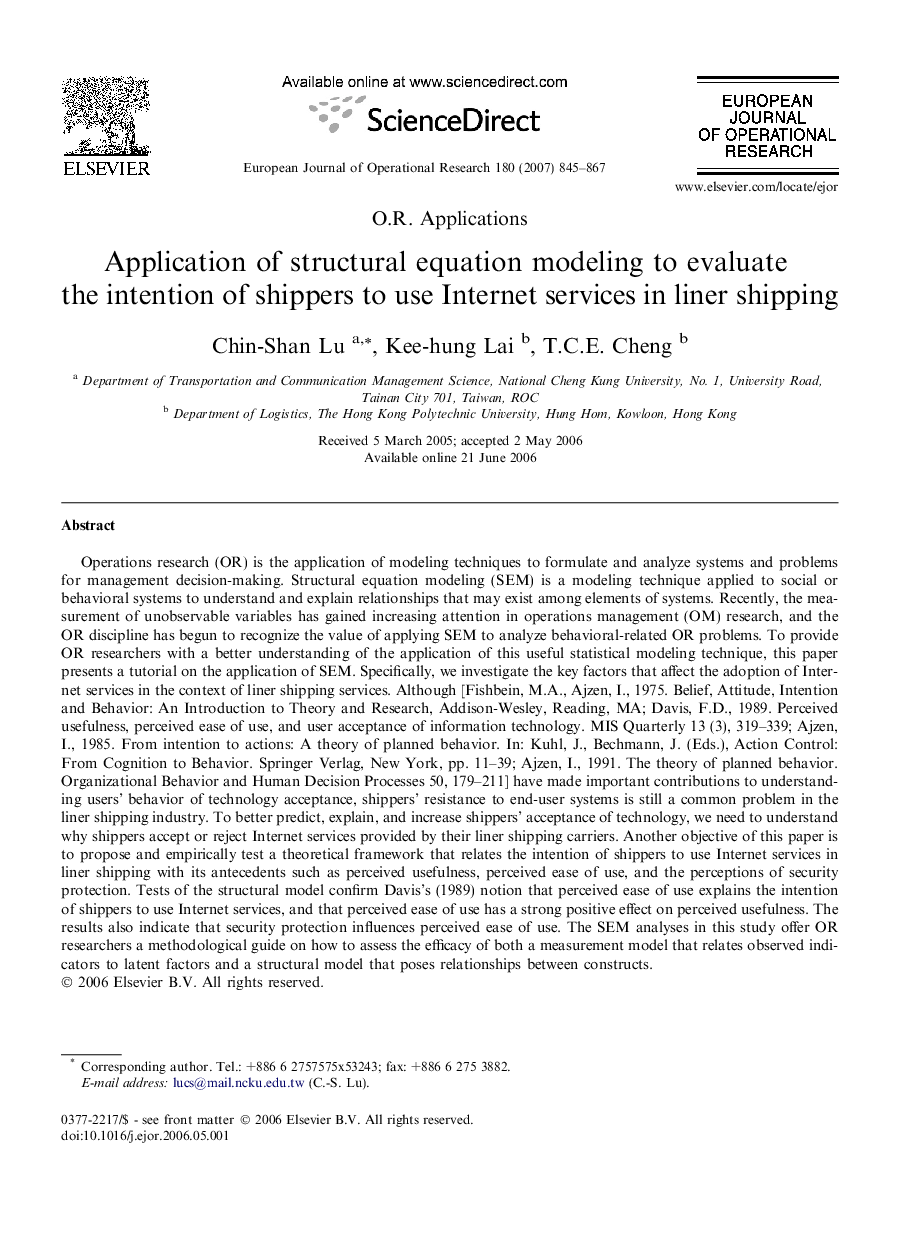| Article ID | Journal | Published Year | Pages | File Type |
|---|---|---|---|---|
| 482070 | European Journal of Operational Research | 2007 | 23 Pages |
Operations research (OR) is the application of modeling techniques to formulate and analyze systems and problems for management decision-making. Structural equation modeling (SEM) is a modeling technique applied to social or behavioral systems to understand and explain relationships that may exist among elements of systems. Recently, the measurement of unobservable variables has gained increasing attention in operations management (OM) research, and the OR discipline has begun to recognize the value of applying SEM to analyze behavioral-related OR problems. To provide OR researchers with a better understanding of the application of this useful statistical modeling technique, this paper presents a tutorial on the application of SEM. Specifically, we investigate the key factors that affect the adoption of Internet services in the context of liner shipping services. Although [Fishbein, M.A., Ajzen, I., 1975. Belief, Attitude, Intention and Behavior: An Introduction to Theory and Research, Addison-Wesley, Reading, MA; Davis, F.D., 1989. Perceived usefulness, perceived ease of use, and user acceptance of information technology. MIS Quarterly 13 (3), 319–339; Ajzen, I., 1985. From intention to actions: A theory of planned behavior. In: Kuhl, J., Bechmann, J. (Eds.), Action Control: From Cognition to Behavior. Springer Verlag, New York, pp. 11–39; Ajzen, I., 1991. The theory of planned behavior. Organizational Behavior and Human Decision Processes 50, 179–211] have made important contributions to understanding users’ behavior of technology acceptance, shippers’ resistance to end-user systems is still a common problem in the liner shipping industry. To better predict, explain, and increase shippers’ acceptance of technology, we need to understand why shippers accept or reject Internet services provided by their liner shipping carriers. Another objective of this paper is to propose and empirically test a theoretical framework that relates the intention of shippers to use Internet services in liner shipping with its antecedents such as perceived usefulness, perceived ease of use, and the perceptions of security protection. Tests of the structural model confirm Davis’s (1989) notion that perceived ease of use explains the intention of shippers to use Internet services, and that perceived ease of use has a strong positive effect on perceived usefulness. The results also indicate that security protection influences perceived ease of use. The SEM analyses in this study offer OR researchers a methodological guide on how to assess the efficacy of both a measurement model that relates observed indicators to latent factors and a structural model that poses relationships between constructs.
